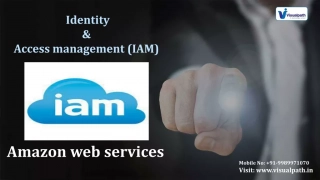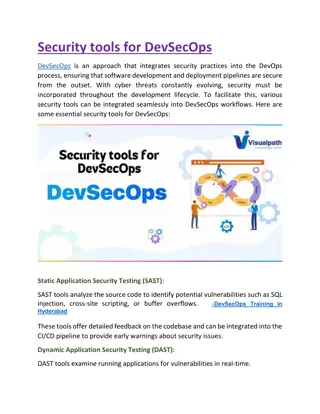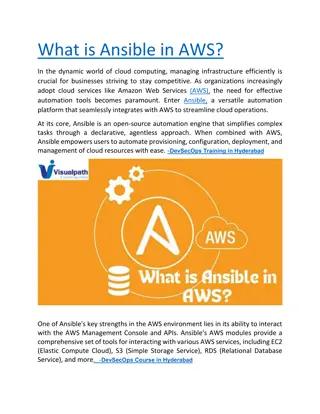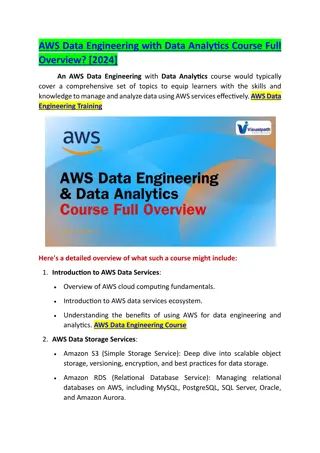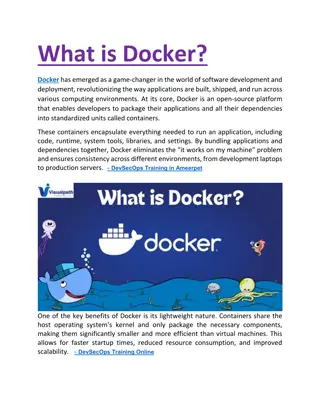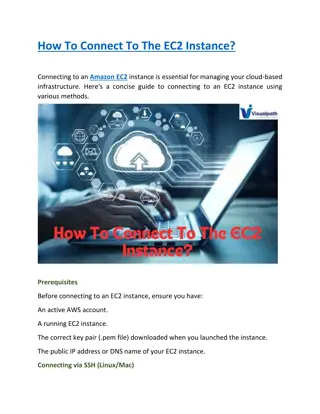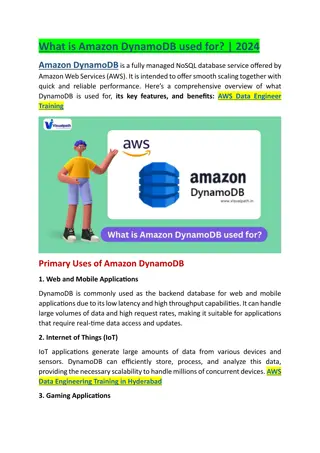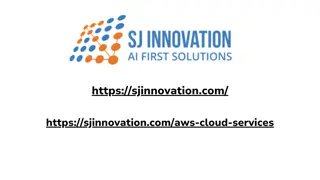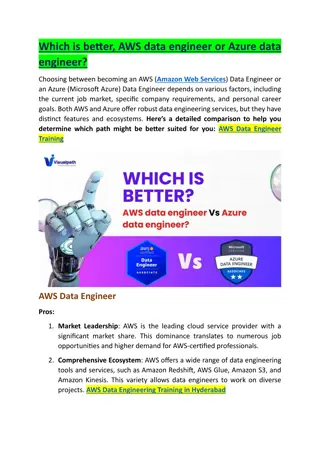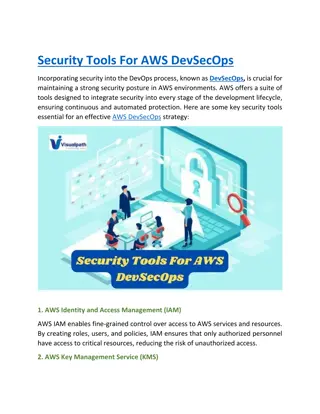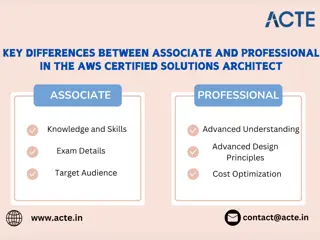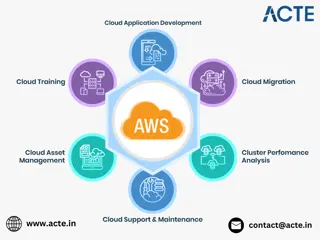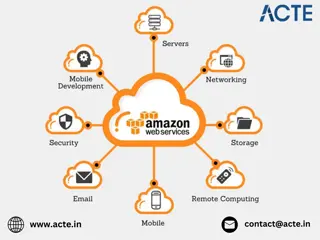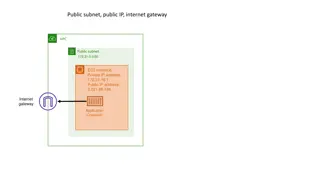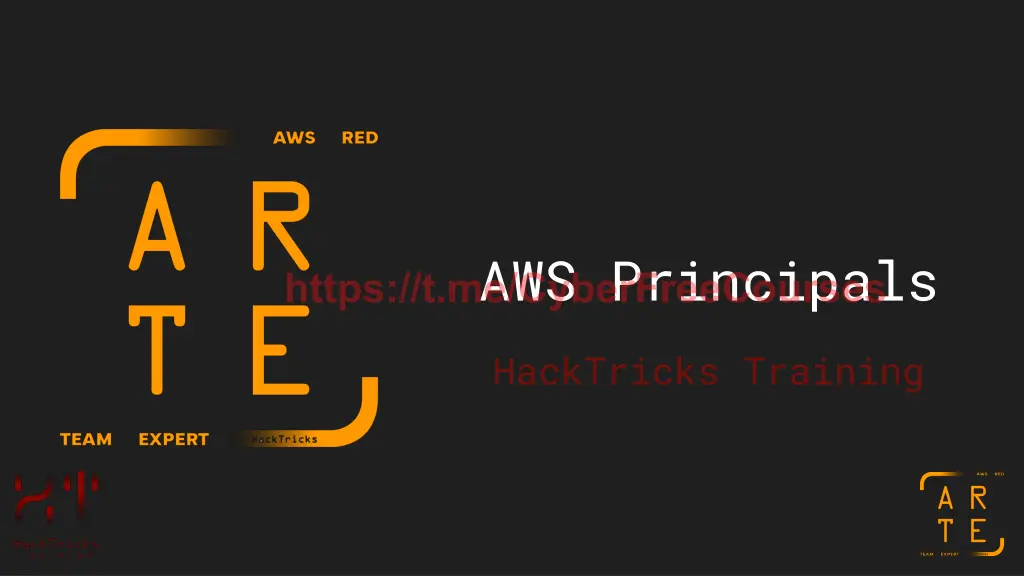
Understanding AWS IAM Concepts
Gain insights into AWS Identity and Access Management (IAM) with explanations on users, MFA, user groups, roles, and the principles of least privilege. Learn how to secure your AWS account effectively.
Download Presentation

Please find below an Image/Link to download the presentation.
The content on the website is provided AS IS for your information and personal use only. It may not be sold, licensed, or shared on other websites without obtaining consent from the author. If you encounter any issues during the download, it is possible that the publisher has removed the file from their server.
You are allowed to download the files provided on this website for personal or commercial use, subject to the condition that they are used lawfully. All files are the property of their respective owners.
The content on the website is provided AS IS for your information and personal use only. It may not be sold, licensed, or shared on other websites without obtaining consent from the author.
E N D
Presentation Transcript
AWS Principals HackTricks Training
IAM - Users DEMO Represents the a or application that interacts with AWS Username + Password API token (max 2 per user) Both Each AWS account will have a Root user. This is the most powerful user in the account. In orgs it s recommended to deactivate root users of children accounts (using SCPs) and leave only the root user of the root account Root users should only be used if there is no other option to recover the account or give a permission From https://cloud.hacktricks.xyz/pentesting-cloud/aws-pentesting/aws-basic-information#id_iam-users
IAM - MFA Policies with MFA conditions can be attached to the following: An IAM user or group A resource such as an Amazon S3 bucket, Amazon SQS queue, or Amazon SNS topic The trust policy of an IAM role that can be assumed by a user It s possible to check Existence - "Condition": {"Bool": {"aws:MultiFactorAuthPresent": "true"}} Duration MFA can be enabled for password authentication & cli aws sts get-session-token --serial-number <arn_device> --token-code <code> Useful to limit permissions of CLI creds, but not always possible MFA is commonly used to access the console But not very used to restrict CLI access https://cloud.hacktricks.xyz/pentesting-cloud/aws-pentesting/aws-basic-information#mfa-multi-factor- authentication
IAM - User Groups Only users (not groups or roles) can be part of a group Policies attached to groups are inherited by users Groups cannot be granted permissions inside a policy No AssumeRole permission to a group Recommended way to group users and assign them permissions From https://cloud.hacktricks.xyz/pentesting-cloud/aws-pentesting/aws-basic-information#id_iam-groups
IAM - Roles Similar to a user but without credentials associated Can be accessed only through other principals (users, federated, other roles ) Each role has a trust policy that indicates who can access it - This is ALWAYS a requirement to assume the role The account of the ppal doesn t always need to allow it to assume a role to be able to assume it (more on this on the STS chapter). Credentials are temporary (session token) From https://cloud.hacktricks.xyz/pentesting-cloud/aws-pentesting/aws-basic-information#id_iam-roles
IAM - Boundaries & Least Privilege Principle Limit permissions a specific user might have Even if the user has Administrator access, if the boundary indicates just read buckets, he will only be able to read buckets Only users can have them (not roles or groups) This, SCPs and following the least privilege principle are the ways to control that users doesn't have more permissions than the ones he needs. The least privilege principle is just to assign users ONLY the permissions they need and no more (making sure they really need the permissions). AWS and other commercial tools can help you with that based on which actions a principal used in the past From https://cloud.hacktricks.xyz/pentesting-cloud/aws-pentesting/aws-basic-information#iam-boundaries
IAM - Policies AWS managed policies Defined by AWS - Sometimes too many permissions But easy to use Custom Managed Policies Defined by Customer - Granular permissions Users, Groups, Roles support inline policies (not recommended - stealthy?) Users, Groups, Roles can have attached policies (recommended - more visibility) Principals don t have any permissions unless otherwise specified If a policy is granting a permission and a different one is denying it, the permission is denied ACL: Some services (KMS, S3 ) support resource based policies Specific policies for the resource that can grant/deny access to principals without using the IAM service Recommended policy for whitebox audit: arn:aws:iam::aws:policy/ReadOnlyAccess From https://cloud.hacktricks.xyz/pentesting-cloud/aws-pentesting/aws-basic-information#policies
IAM - Session Policies Like boundaries but for session credentials Credential created with an IAM role is impersonated A session policy is a regular JSON policy that indicates the mx level of permissions a session might have This is used by AWS in some services like Cognito when it allows unauthenticated users to access an IAM role to limit what that session can do It can also be used by careful aws administrators to not create sessions with excessive permissions (max 10 arns) aws sts assume-role \ --role-arn <value> \ --role-session-name <value> \ [--policy-arns <arn_custom_policy1> <arn_custom_policy2>] [--policy <file://policy.json>] From https://cloud.hacktricks.xyz/pentesting-cloud/aws-pentesting/aws-basic-information#session-policies
IAM - Password Policy Default password policy: Minimum password length of 8 characters and a maximum length of 128 characters Size should be increased Minimum of three of the following mix of character types: uppercase, lowercase, numbers, and ! @ # $ % ^ & * ( ) _ + - = [ ] { } | ' symbols Not be identical to your AWS account name or email address From https://docs.aws.amazon.com/IAM/latest/UserGuide/id_credentials_passwords_account-policy.html
IAM - Identity Providers Trust external Identity Providers (Google, Github, Okta, OneLogin, Active Directory ) SAML & OAuth (OpenID) supported Users from the external Identity Provider will be able to assume a role in AWS Different roles could be trusting the same Identity Provider Depending on the user privileges/groups of the third party platform, he will be assume one AWS role or the other No way to give MFA based access to this users MFA needs to be controlled in the trusted third party platform From https://cloud.hacktricks.xyz/pentesting-cloud/aws-pentesting/aws-basic-information#identity-federation
IAM - Identity Providers DEMO Create a Github Identity Provider Demo in: https://www.youtube.com/watch?v=3ocKVmXZZZY https://cloud.hacktricks.xyz/pentesting-cloud/aws-pentesting/aws-basic-information#identity-federation
IAM - Identity Center Central place that brings together administration of users and their access to AWS accounts and cloud applications. Login domain is going to be something like <user_input>.awsapps.com. To login users, there are 3 identity sources that can be used: Identity Center Directory: Regular AWS users Active Directory: Supports different connector External Identity Provider: All users and groups comes from an external Identity Provider (IdP) https://cloud.hacktricks.xyz/pentesting-cloud/aws-pentesting/aws-basic-information#iam-identity-center
4- Select Permissions IAM - Identity Center 1- Create User 2- Select Account to access 5- Review & Accept 3- Select User
IAM - Identity Center 5.1- IdP is automatically generated 5.2- Role is generated
IAM - Identity Center 6- User can now login


